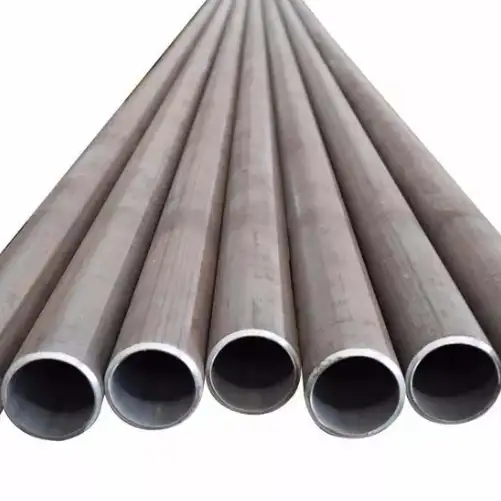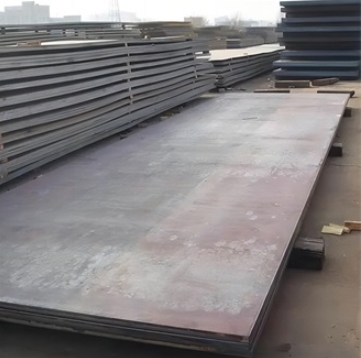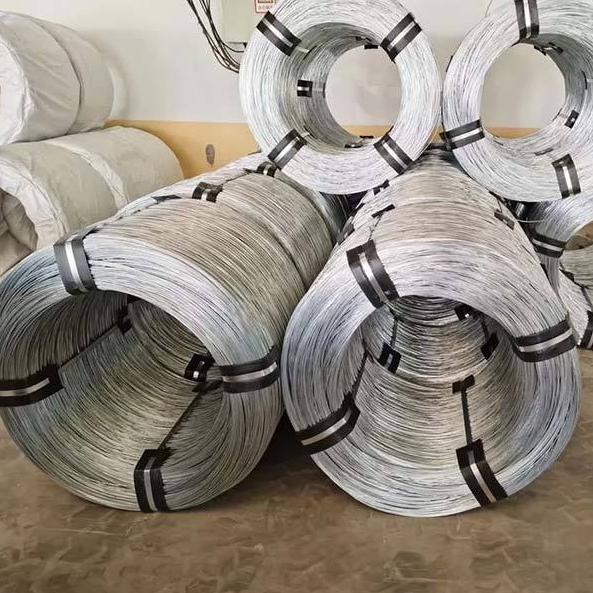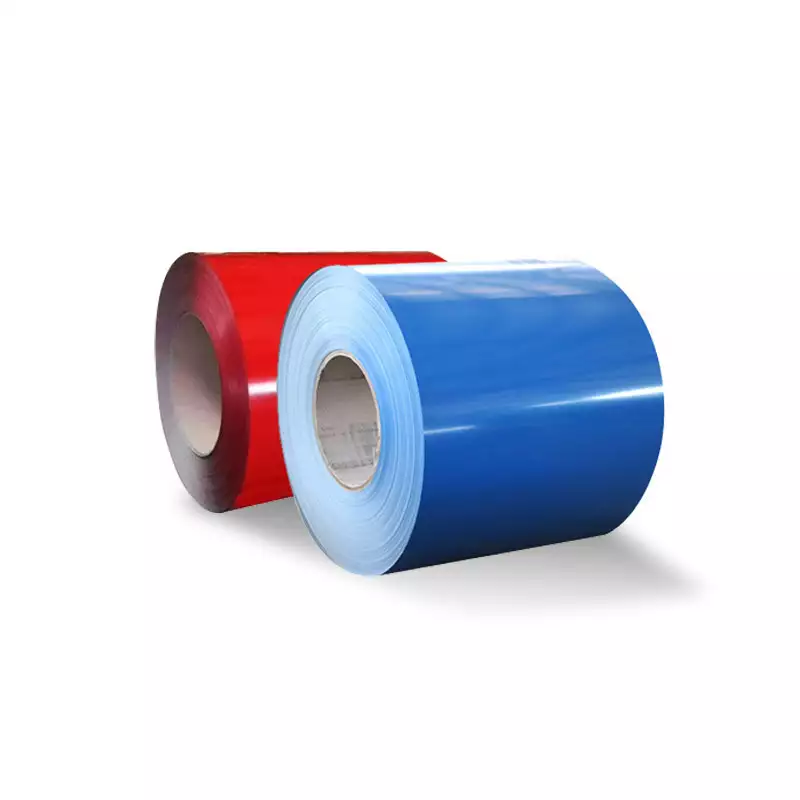As a materials engineer with over fifteen years immersed in metallurgical applications, I constantly witness the indispensable role medium carbon steel plays. Sitting strategically between low and high carbon variants, this alloy family delivers an exceptional balance of strength, toughness, and machinability that few materials can match cost-effectively. From the axles propelling your car to the structural frames supporting factories, medium carbon steel is the unsung hero of modern engineering. Its versatility stems directly from its carefully controlled composition and the thermomechanical treatments applied. While high-strength alloys grab headlines, the practical reality is that medium carbon steels, grades like the ubiquitous 1045 or the tougher 4140, form the core structural skeleton of countless machines and infrastructure projects globally.
1. Defining Composition: The Carbon Crucible
What precisely makes a steel “medium carbon”? It boils down to carbon content. These steels typically contain 0.30% to 0.60% carbon by weight. This specific range is crucial. Below 0.30%, we enter low carbon territory, characterized by excellent ductility and weldability but lower strength. Exceeding 0.60% pushes us into high carbon steel, renowned for hardness and wear resistance but significantly reduced toughness and greater difficulty in fabrication. The carbon atoms in this middle range interact powerfully with the iron matrix during heat treatment, enabling substantial strengthening through mechanisms like martensite formation. Alloying elements like manganese (commonly 0.60-1.00%) are vital too; they enhance hardenability – the depth to which hardness can penetrate during quenching. Trace elements like silicon, sulfur, and phosphorus are controlled within strict limits dictated by standards like ASTM A29/A29M. Simply put, it’s this chemical recipe that sets the stage for the remarkable properties we leverage daily.
2. Key Mechanical Properties: Strength Meets Practicality
Medium carbon steels truly shine in their mechanical performance profile. Let’s cut to the chase: their primary appeal lies in achieving significantly higher strength and hardness than low carbon steels while retaining considerably better ductility and toughness than their high carbon cousins. How does this translate numerically?
-
Tensile Strength: Ranges widely from approximately 500 MPa (72 ksi) in annealed conditions to over 1000 MPa (145 ksi) in quenched and tempered states. For instance, a standard 1045 steel in the normalized condition typically exhibits a tensile strength around 585 MPa (85 ksi) (ASM Handbook, Vol 1).
-
Yield Strength: Follows a similar pattern, from roughly 250 MPa (36 ksi) annealed to 850 MPa (123 ksi) or higher after heat treatment.
-
Hardness: Brinell Hardness (HB) can span from about 120 HB (soft, machinable) to over 300 HB (suitable for wear components).
-
Ductility: Measured by % Elongation, values typically range from 15% to 25% in softer conditions, decreasing to around 10-15% in high-strength tempered conditions – still sufficient for many structural applications.
-
Toughness: Impact toughness (measured by Charpy V-notch tests) is notably higher than high carbon steels, making medium carbon grades less prone to brittle fracture under shock loading, especially after proper tempering. This balance is the sweet spot. You get the muscle needed for load-bearing components without the extreme brittleness that plagues higher carbon grades. It’s the Goldilocks zone of carbon steels.

3. Common Grades & Specifications: Decoding the Labels
Navigating the alphabet soup of steel grades is essential. Different standards (ASTM, SAE/AISI, ISO, EN) use distinct naming conventions, but they often refer to similar compositions. Here’s a breakdown of prevalent medium carbon grades:
-
SAE/AISI 1040/1045/1050: The bedrock grades. 1045 (0.45% C) is arguably the most common, offering an excellent all-round balance. Used for shafts, gears, bolts, and general machinery parts. ASTM A576 covers these for bars.
-
SAE/AISI 4130/4140/4340 (Alloy Steels): These incorporate chromium and molybdenum. 4140 (0.40% C, 0.80-1.10% Cr, 0.15-0.25% Mo) is a superstar. The added alloys dramatically boost hardenability and strength, allowing thicker sections to be hardened and enabling superior strength-to-weight ratios after quenching and tempering. Essential for high-stress applications like aircraft landing gear, crankshafts, and drill collars. Governed by specs like ASTM A829 for plate.
-
EN 1.0503 / C45 (Equivalent to 1045): A European workhorse grade.
-
EN 1.7225 / 42CrMo4 (Equivalent to 4140): The European counterpart for high-hardenability alloy steel.
-
ASTM A36 (Structural): While often classified as a mild steel, A36 can have carbon up to 0.29% (borderline low/medium) and manganese up to 1.03%, frequently exhibiting medium-carbon-like properties in thicker sections. Ubiquitous in construction.
Table 1: Comparison of Key Medium Carbon Steel Grades
| Grade (SAE/AISI) | Nominal Carbon % | Key Alloying Elements | Typical Condition | Tensile Strength (MPa) | Yield Strength (MPa) | Hardness (HB) | Primary Applications |
|---|---|---|---|---|---|---|---|
| 1040 | 0.40% | Mn (0.60-0.90%) | Cold Finished | 520-620 | 310 | 149-179 | Shafts, Gears, Bolts |
| 1045 | 0.45% | Mn (0.60-0.90%) | Normalized | 585-680 | 340 | 170-210 | General Machinery, Axles |
| 1050 | 0.50% | Mn (0.60-0.90%) | Annealed | 450-550 | 275 | 140-170 | Springs, High Strength Bolts |
| 4140 | 0.40% | Cr (0.80-1.10%), Mo (0.15-0.25%) | Q&T (Tempered @ 400°C) | 1000-1200 | 850+ | 280-330 | Crankshafts, Gears, Aircraft Parts |
| 4340 | 0.40% | Ni (1.65-2.00%), Cr (0.70-0.90%), Mo (0.20-0.30%) | Q&T | 1100-1300+ | 950+ | 300-360 | High-Stress Aerospace Components |
4. Manufacturing & Processing: Shaping Performance
The journey from melt to finished part critically defines the steel’s final characteristics. Medium carbon steels are primarily produced via Basic Oxygen Furnace (BOF) or Electric Arc Furnace (EAF) routes, followed by continuous casting into blooms, billets, or slabs. However, the real magic happens downstream:
-
Hot Working: Rolling, forging, or extruding at high temperatures (above the recrystallization point) refines the grain structure, improving toughness and directional properties. Forgings, common for critical components like connecting rods, offer superior grain flow compared to machined bar stock. Grain size matters immensely for fatigue life.
-
Cold Working: Processes like drawing or cold rolling induce strain hardening, increasing strength and hardness but reducing ductility. Useful for precision bars or sheet needing higher surface hardness.
-
Heat Treatment – The Game Changer: This is where medium carbon steels unlock their full potential.
-
Annealing/Spheroidizing: Softens the steel for machining by producing a coarse pearlite or spheroidized cementite structure.
-
Normalizing: Heating above the critical temperature and air cooling refines grains and improves uniformity. Often a good starting point before hardening.
-
Quenching & Tempering (Q&T): The powerhouse process. The steel is austenitized (heated to ~800-900°C depending on grade), rapidly quenched (e.g., in water, oil, or polymer) to form hard but brittle martensite, then tempered (reheated to 200-650°C) to transform martensite into tough tempered martensite, achieving the desired strength-ductility balance. The tempering temperature is crucial: higher temp = lower strength/higher toughness. Choosing the right quenchant is critical to avoid cracking, especially for intricate shapes; oil quenching is gentler than water. A study by the National Institute of Standards and Technology (NIST) found that optimized Q&T cycles on 4140 can improve fatigue strength by up to 35% compared to normalized conditions.
-
-
Surface Hardening (Case Hardening): Techniques like induction hardening or flame hardening rapidly heat only the surface layer and quench it, creating a hard, wear-resistant case while maintaining a tough core. Perfect for gears and bearing surfaces. Achieving the precise case depth requires expert control.
5. Why Choose Medium Carbon Steel? The Compelling Advantages
So, what drives engineers like me to specify medium carbon steel so frequently? Let’s lay out the compelling benefits:
-
Optimal Strength-Toughness Balance: This is the paramount advantage. They provide substantially higher yield and tensile strength than low carbon steels without sacrificing the fracture toughness critical for dynamic or impact-loaded components. High carbon steels simply can’t compete here.
-
Superior Machinability (in Annealed/Normalized State): Compared to tougher alloy steels or hardened materials, medium carbon grades like 1045 are relatively easy to machine. They produce manageable chips and offer good surface finishes. This reduces manufacturing costs significantly. Time is money on the shop floor.
-
Good Wear Resistance (After Hardening): Through-hardening or surface hardening imparts excellent resistance to abrasion and surface degradation, making them suitable for gears, shafts, and agricultural implements.
-
Cost-Effectiveness: Per unit of strength achieved, medium carbon steels are generally far more economical than high-alloy steels, stainless steels, or non-ferrous alternatives. The raw materials (iron, carbon, manganese) are abundant.
-
Excellent Response to Heat Treatment: Their carbon content is ideal for transformative strengthening via quenching and tempering. This adaptability allows properties to be precisely tailored to the application. Alloy grades like 4140 offer even greater depth of hardening.
-
Weldability (With Precautions): While not as effortlessly weldable as low carbon steel, medium carbon grades can be welded successfully using pre-heat, post-heat (stress relieving), and low-hydrogen electrodes (e.g., E7018) to prevent hydrogen-induced cracking and manage the heat-affected zone (HAZ) hardness. Procedure qualification is key.
-
Widespread Availability: Grades like 1045 and 4140 are commodity materials stocked globally in numerous forms (bar, plate, sheet, tube, forging stock), ensuring easy procurement from established suppliers like Luokaiwei.
6. Industrial Applications: Where It Performs
The proof lies in real-world use. Medium carbon steels are the backbone of heavy industry and transportation:
-
Automotive: Axles, shafts, connecting rods (often forged 1045 or 4140), gears, steering components, suspension arms, fasteners. Approximately 60% of a typical vehicle’s engine components utilize medium carbon grades according to SAE International reports.
-
Machinery & Equipment: Gears, spindles, cams, bolts, studs, machine tool frames, agricultural equipment parts (ploughshares, tines), hydraulic cylinders.
-
Construction: High-strength bolts (ASTM A325/A490, often 1045 or alloy equivalents), anchor rods, structural forgings (especially higher strength versions).
-
Oil & Gas: Drill collars (4140/4145H), tool joints, valve bodies, pump shafts subjected to high torque.
-
Railways: Couplers, yokes, wheels (higher carbon variants), axles.
-
Consumer Goods: Hand tools (wrenches, hammers), springs (music wire – high carbon, but some medium), bicycle frames (chromoly – 4130).
7. Case Study: Enhancing Heavy-Duty Truck Axle Durability
Problem: A major truck manufacturer experienced premature failures in rear axle shafts made from a lower-grade steel. Failures occurred due to fatigue cracks initiating at stress concentrators, leading to costly recalls and downtime for fleet operators. The shafts required higher fatigue strength and torsional rigidity.
Solution: The engineering team switched to SAE 4140 steel bar stock, heat treated to a specific quench and temper cycle achieving a core hardness of 28-32 HRC and a tensile strength of approximately 950 MPa. The increased hardenability of 4140 ensured sufficient strength throughout the shaft cross-section. Critical fillet radii were redesigned to reduce stress concentration factors.
Result: Rigorous bench testing and subsequent field monitoring showed a 250% increase in fatigue life compared to the previous design. Warranty claims related to axle shaft failure dropped by over 90% within two years of implementation. The moderate cost increase for the 4140 material and heat treatment was significantly outweighed by the reduction in warranty costs and enhanced brand reputation for reliability. This shift underscored the value proposition of selecting the appropriate medium carbon alloy and processing.
8. Procurement & Quality Considerations: Sourcing Wisely
Specifying the right grade and condition is only half the battle; sourcing quality material is paramount. Reputable suppliers like Luokaiwei understand these critical factors:
-
Material Certification: Insist on valid Mill Test Reports (MTRs) or Certificates of Conformance (CoCs) verifying chemical composition and mechanical properties against the specified standard (e.g., ASTM A576, A829, SAE J404). Traceability is non-negotiable.
-
Condition: Clearly define the required condition – hot rolled, cold drawn, annealed, normalized, pre-hardened (Q&T), or spheroidized. This drastically affects properties and machinability.
-
Dimensions & Tolerances: Specify dimensions and permissible tolerances (e.g., ASTM A484 for stainless, similar principles apply). Surface finish requirements (e.g., turned, ground, peeled) also matter for critical applications.
-
Traceability: Ensure the supplier maintains a robust traceability system linking the material batch to its melt origin and processing history. This is vital for failure analysis and quality audits.
-
Supplier Expertise: Partner with suppliers who possess deep technical knowledge, can advise on grade selection and processing, and consistently meet stringent quality standards. Luokaiwei has built a reputation for reliable supply chain management and technical support in this sector.
9. Medium vs. Low vs. High Carbon Steel: A Clear Comparison
Choosing the right carbon level is fundamental. Here’s a decisive comparison:
Table 2: Carbon Steel Classification Comparison
| Characteristic | Low Carbon Steel (≤0.30% C) | Medium Carbon Steel (0.30-0.60% C) | High Carbon Steel (≥0.60% C) |
|---|---|---|---|
| Typical Strength | Low (250-500 MPa TS) | Medium-High (500-1000+ MPa TS) | High (700-1200+ MPa TS) |
| Hardness | Low | Medium-High (After HT) | Very High (After HT) |
| Ductility | Excellent | Good (Annealed/Norm) to Moderate (HT) | Low (Brittle when Hard) |
| Toughness | Excellent | Good (Especially after Tempering) | Poor (Brittle) |
| Machinability | Good (Gummy) | Good (Annealed/Norm) | Poor (Abrasive, Requires HT) |
| Weldability | Excellent | Fair (Requires Precautions) | Poor (Highly Crack Sensitive) |
| Wear Resistance | Poor | Good (After Hardening) | Excellent (Hardened) |
| Primary Cost | Lowest | Moderate | Moderate-High |
| Key Applications | Sheet metal, Structures, Pipes | Machinery parts, Axles, Gears, Fasteners | Cutting Tools, Springs, Wire, Wear Plates |
10. Frequently Asked Questions (FAQ)
-
Q: Can medium carbon steel rust? How do I protect it?
A: Absolutely. Like most carbon steels, it is highly susceptible to corrosion in moist or corrosive environments. Protection is essential and includes methods like painting, powder coating, galvanizing (zinc coating), electroplating (e.g., zinc, nickel, chromium), or applying specialized corrosion inhibitors. For severe environments, consider upgrading to stainless steel. -
Q: Is 4140 considered a medium carbon steel?
A: Yes, definitively. SAE 4140 contains approximately 0.40% carbon, placing it squarely in the medium carbon range. Its classification as an “alloy steel” comes from its significant additions of chromium and molybdenum, which enhance its hardenability and strength beyond plain carbon grades like 1045, but the carbon content defines its base category. -
Q: What’s the main difference between 1045 and 4140?
A: The core difference is alloy content and resulting hardenability. 1045 is primarily iron-carbon-manganese. 4140 adds chromium (~1%) and molybdenum (~0.2%). This allows 4140 to be hardened to much greater depths and achieve significantly higher strength levels, especially in thicker sections, after quenching and tempering. 4140 is generally stronger and tougher but may be slightly more expensive and require more stringent welding procedures. -
Q: How does heat treatment affect medium carbon steel properties?
A: Heat treatment, particularly quenching and tempering, is transformative. In the annealed state, these steels are relatively soft and machinable. Quenching creates extremely hard martensite but makes the steel brittle. Tempering then reduces this brittleness and relieves stresses, resulting in a dramatic increase in toughness and ductility while retaining a large portion of the hardness and strength gained from quenching. The final properties are precisely controlled by the tempering temperature and time. -
Q: Why might I choose medium carbon steel over high-strength low-alloy (HSLA) steel?
A: The choice hinges on cost, required properties, and processing. Medium carbon steels (especially plain carbon like 1045) are generally cheaper per pound than HSLA grades. They achieve high strength primarily through carbon content and heat treatment, offering excellent machinability in the annealed state. HSLA steels gain strength from microalloying elements (like Nb, V, Ti) and controlled rolling, often providing higher strength without requiring heat treatment and offering superior weldability. If your component requires very high strength and can utilize the as-rolled condition with good weldability, HSLA might be better. If you need to machine complex shapes before final heat treatment to achieve high core strength, medium carbon is often more economical.
Conclusion: The Enduring Essential
Medium carbon steel remains a cornerstone of industrial manufacturing for compelling reasons. Its unique position, offering a practical and cost-effective blend of strength, toughness, machinability, and responsiveness to heat treatment, makes it irreplaceable for a vast array of critical components. From the reliable rotation of a driveshaft to the structural integrity of a high-strength bolt, its performance is proven. While advanced materials constantly emerge, the fundamental advantages of well-understood, readily available, and process-optimized grades like 1045 and 4140 ensure their continued dominance. As designers and engineers, mastering the nuances of these grades – their compositions, achievable properties, processing requirements, and optimal applications – is fundamental to creating robust, reliable, and economically viable products. Partnering with knowledgeable suppliers like Luokaiwei further ensures consistent quality and performance, reinforcing why medium carbon steel truly is the indispensable industrial workhorse.
Authoritative References:








